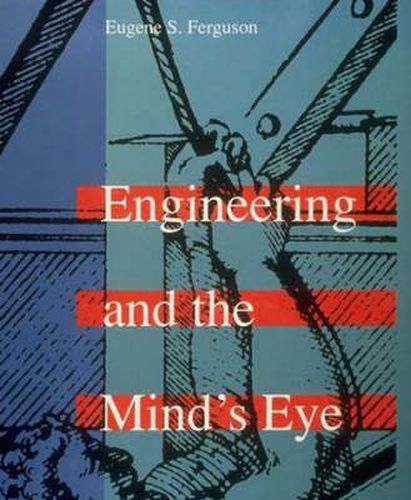Readings Newsletter
Become a Readings Member to make your shopping experience even easier.
Sign in or sign up for free!
You’re not far away from qualifying for FREE standard shipping within Australia
You’ve qualified for FREE standard shipping within Australia
The cart is loading…






The things that engineers design are everywhere, and the influence that engineers have on daily life is far out of proportion to their numbers. In this expanded version of a remarkable essay published in Science more than a decade ago, Eugene Ferguson takes a probing look at the process of engineering design, arguing that despite modern technical advances, good engineering is still as much a matter of intuition and nonverbal thinking as of equations and computation.Ferguson, who has been successively a mechanical engineer, a technical museum curator, and a teacher of the history of technology, uses examples ranging from the development of the American axe to the collapse of the Hartford Coliseum and the performance of the Hubble space telescope to illustrate the ways in which visual thinking enriches engineering and the ways in which engineering that relies solely on technical sophistication can go wrong. He argues that a system of engineering education that ignores this heritage of nonverbal thinking will produce engineers who are dangerously ignorant of the many ways in which the real world differs from the mathematical models constructed in academic minds.In Engineering and the Mind’s Eye, Ferguson discusses the nature of engineering design and traces the development of visual and other nonverbal thinking, offering examples of how engineers and other technologists have used such strategies since the Renaissance. Accompanying these examples, and demonstrating the ways in which engineers have shared their knowledge, is a parallel text of illustrations showing how visual thinking has been expressed over the past five centuries. Ferguson concludes his provocative account by arguing that engineering education since 1945 has been skewed toward analytical techniques - which are easiest to teach and evaluate - and away from the art of engineering design as taught by experienced engineers.Eugene Ferguson is Professor of History Emeritus at the University of Delaware.
$9.00 standard shipping within Australia
FREE standard shipping within Australia for orders over $100.00
Express & International shipping calculated at checkout
The things that engineers design are everywhere, and the influence that engineers have on daily life is far out of proportion to their numbers. In this expanded version of a remarkable essay published in Science more than a decade ago, Eugene Ferguson takes a probing look at the process of engineering design, arguing that despite modern technical advances, good engineering is still as much a matter of intuition and nonverbal thinking as of equations and computation.Ferguson, who has been successively a mechanical engineer, a technical museum curator, and a teacher of the history of technology, uses examples ranging from the development of the American axe to the collapse of the Hartford Coliseum and the performance of the Hubble space telescope to illustrate the ways in which visual thinking enriches engineering and the ways in which engineering that relies solely on technical sophistication can go wrong. He argues that a system of engineering education that ignores this heritage of nonverbal thinking will produce engineers who are dangerously ignorant of the many ways in which the real world differs from the mathematical models constructed in academic minds.In Engineering and the Mind’s Eye, Ferguson discusses the nature of engineering design and traces the development of visual and other nonverbal thinking, offering examples of how engineers and other technologists have used such strategies since the Renaissance. Accompanying these examples, and demonstrating the ways in which engineers have shared their knowledge, is a parallel text of illustrations showing how visual thinking has been expressed over the past five centuries. Ferguson concludes his provocative account by arguing that engineering education since 1945 has been skewed toward analytical techniques - which are easiest to teach and evaluate - and away from the art of engineering design as taught by experienced engineers.Eugene Ferguson is Professor of History Emeritus at the University of Delaware.